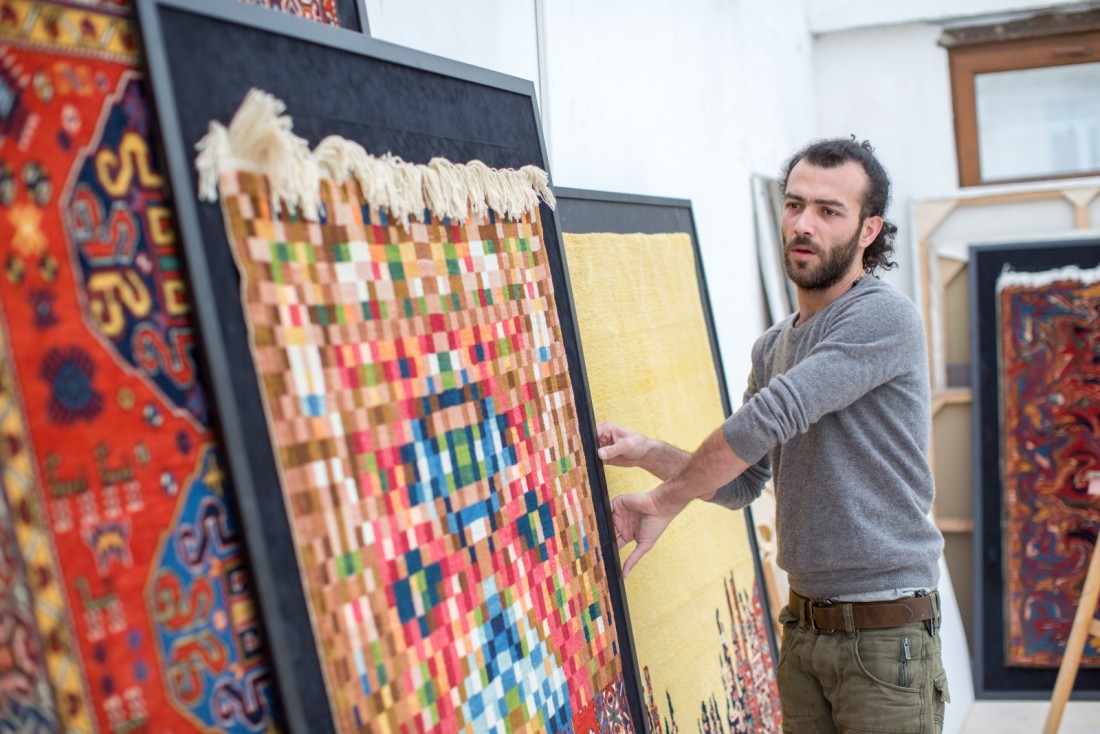Azerbaijani visual artist Faig Ahmed weaves together tradition and modernity in his exhibitions, drawing on traditional methods and patterns of craft while adapting his work to reflect changes in the world.
His sculptures, rugs, and other visual arts have appeared in numerous exhibits around the globe. He has shown work in New York, Paris, London, Berlin, Moscow, Rome, Sydney and Dubai, just to name a few.
Azerbaijan has produced some of the world’s most beautiful carpets for centuries. Typically, carpets of this type cover everything from floors to walls to certain furniture. While Ahmed draws on this heritage, he also weaves modern artistic movements and techniques into his work.
Faig Ahmed uses carpets to represent society and the self
“The carpet is a structure – the structure of society, community, or culture,” says Ahmed. “But, like any system, having reached its peak, it should be destroyed, and then on the ashes of the havoc, you can build something new.”
This philosophy fuels Ahmed’s exhibitions, in which he takes either original designs or existing traditions and transforms them so as to represent change and rebirth.

“Oiling”: an original piece currently in the Seattle Museum. This carpet begins with a take on traditional designs, but then cascades down like oil paint dripping down a canvas.
- This
“I love being a hostage [to tradition], because it’s a quiz and you have to take it to set yourself free,” Ahmed explains. By understanding the constraints of tradition, he can then push those boundaries and explore the intersection of tradition and modernity.
Ahmed does not work alone. In fact, he usually works with a group of 20 to 25 people to craft the final product. First, he designs the projects digitally. Then, it gets transferred onto thread.
In addition to the influence of Azeri carpet-weaving, Ahmed draws on Indian embroidery. He remarks that his trip to India changed the way he views art as a whole.
“Before my trip to India, all my artistic expression was directed outwards,” he recalls. “After I went through the process of learning Indian embroidery, my expression is now internal and directed into myself.”
Faig Ahmed grew childhood passion into a profession
Ahmed grew up in post-Soviet Azerbaijan in the 1990s. During this time, exposure to both tradition and instability built the foundation of his later artistic career. Carpets like those he uses now surrounded him from birth.
“One day when my parents left for [the] countryside, I decided to change the places of the patterns and cut the carpet into pieces,” Ahmed recalls. “Of course I never managed to gather the pieces together. I was waiting for my parents to come and punish me, but they didn’t. They just took the carpets away from my room forever.”

“Dragon Path: as a child, Ahmed imagined dragons and roads in his home carpets. Now, he can create them himself.
The “Exploring Inward” exhibition shows the intersection of tradition and modernity
Ahmed’s “Exploring Inward” exhibition at the Louise Blouin Foundation in 2014 features 3-D carpets and represents an Azeri model of modern art.
Ahmed hopes that he has helped Azerbaijan develop its own modern art movement, rather than imitations of Western art. At the same time, “Azerbaijanis are very flexible,” says Ahmed. “…It’s a delicate balance. You have to be sensitive to changes while keeping your identity and remembering your roots.”

Gravity and Antigravity, photo by Nathan Browning

Exploring Inward by Faig Ahmed, Photo by Nathan Browning

Exploring Inward by Faig Ahmed, Photo by Nathan Browning
See more of Faig Ahmed’s work on his official website.





